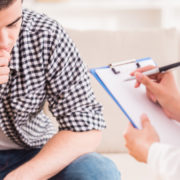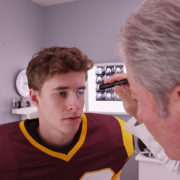Fatigue and Insomnia Following Traumatic Brain Injury (and what you can do to help!)
Fatigue and Insomnia Following Traumatic Brain Injury (and what you can do to help!)

Sleep and daytime energy are two crucial aspects to a happy and successful life. That is why it can be very unsettling to traumatic brain injury (TBI) patients to struggle falling asleep, and consequentially, thrive during the daytime. A disruption in the chemical balance in the brain can leave one with a chronic condition of sleepiness and, frustratingly, the inability to maintain a consistent sleep schedule. If this is what you are experiencing, you are not alone. Up to 70% of individuals with TBI will suffer from sleeping problems, even after minor injuries. Lack of sustained quality sleep can be serious, leading to or worsening symptoms of anxiety, depression, and/or physical pain.
Insomnia can possibly appear directly after brain injury and possible persist for years after. During this time, personal relationships, family life, and school/work success can be compromised by sleep-related symptoms. The two most common types of interventions for those with TBI-related insomnia are behavioral modifications and medication. Each case of TBI is different— Pathways emphasized comprehensive evaluations to assemble an individual treatment plan. While it is important to seek professional help for TBIs, here are some general suggestions for those suffering from insomnia:
*Stay consistent! Go to bed and wake up at consistent time (7-9 hours for adults is ideal)
*Avoid caffeine, alcohol and nicotine! These substances disrupt sleep substantially.
*Minimize distractions such as computer, smartphones, television and lights.
*Exercise regularly. In addition to its anti-depressant effects, exercise can restore chemical balance in brain and get one on a reliable sleep schedule.
*Keep day-time activities out of the bed. Try keeping television and iPhone away when trying to go to sleep. If you cannot fall asleep, use electronics outside of the bed.
The Pathways team of professionals has helped thousands of people with brain injuries. We are Dedicated to effective and compassionate care for individuals with neurological challenges.
The post Fatigue and Insomnia Following Traumatic Brain Injury (and what you can do to help!) appeared first on Pathways Neuropsychology Associates.
Source: Pathways Neuropsychology
Fatigue and Insomnia Following Traumatic Brain Injury (and what you can do to help!)







 March is
March is 


